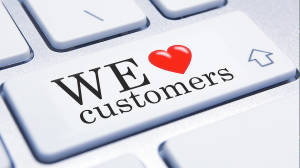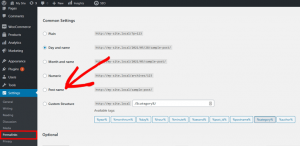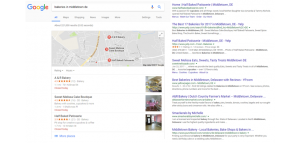
With social media firmly established as the most popular web activity amongst mainstream users, consumers now make their purchasing decisions in a dramatically different way to how they did just a few years ago.
Consumers share, advise, review, complain and compliment brands regarding their customer experiences across the web and social media sites for all to see.
But what does online customer service proficiency entail?
In this blog post, we’ll be outlining six best practices for preparing your organisation to develop robust online customer service via social media. Let’s have a look!
1. Monitor customer comments
Developing an excellent customer service approach depends on how well you monitor all online conversations about your brand. And this is why choosing the social media monitoring platform that suits your needs best is essential.
For most customer service teams, selecting the terms to monitor should be fairly simple. Start by tracking the brand and customer service terms together, as this will likely help you hone in on the most relevant discussions.
2. Prepare to respond to customer comments
Once you understand where and when your customers mention your brand, you need to develop an appropriate response plan by defining what you’ll respond to and when you’ll respond.
An important aspect to bear in mind is defining the issues that your social media customer service team will handle and those they will not. For instance, will you handle enquiries that touch on customer privacy? Will you ignore or respond to the trolls who are throwing broadly negative statements about your brand?
3. Integrate and alert
Many companies lack the resources to have a large amount of dedicated staff logged into a social media monitoring tool awaiting mentions that require their attention. To address this, advanced social media monitoring tools offer email-alert systems to accompany their main user dashboards.
This enables a relatively small social media team to optimise customer service without sacrificing quality-of-response. They simply integrate their email alerts into the workflows of the rest of the organisation.
4. Analyse sentiment to streamline operations
Advanced social media monitoring tools enable you to automate the segmentation of social media comments and inquiries by sentiment.
Doing so, you can save time by quickly identifying and responding to the negative mentions of your brand.
This type of filtering provides invaluable when teams are stretched for time, allowing them to focus first on the most urgent customer issues.
5. Manage the three most common complaint categories
How you respond to customers online depends greatly on your company’s culture and guidelines for external communications and customer support through other channels.
Still, commonalities have emerged among leading brands in the ways they handle different types of complaints.
Specific complaints – that relate to a particular experience and usually give some detail and context. Such straight-forward complaints have a high probability of resolution, so they often take priority.

General complaints – expressions of general negativity towards a company can be tricky to manage. The ultimate goal, in this situation, should be responding and steering the conversation to a private session to minimise negative publicity.

Trolling/spamming mentions – exist to attract attention or disrupt conversations. Try to ignore those and have a real strategic or customer-centric reason for responding to content online.
6. Use online customer service as a revenue generator
Social media has become a key portal for customer service requests. People are turning to social media en masse, particularly to Twitter, to contact customer service teams with their queries.
Do pay attention to those requests as they usually offer lots of details for you to mine the opportunity to win over customers.
Additionally, the way you deal with leads on social can strongly impact your overall customer service reputation. Be quick, nice and helpful, and most importantly show you care. Going the extra mile will definitely pay off as people will start noticing your responsiveness, and this will impact customer retention and revenue.
A professional, efficient customer service team has the potential to turn complainers into loyal customers.
Enterprise-class social media monitoring tools enable you to never miss an important online comment or complaint and they make it easier for you to gather, organize, prioritize and respond to all kinds of online customer service inquiries.
Feature image taken from: http://legermetrics.com/
Digital & Social Articles on Business 2 Community
(404)
Report Post








